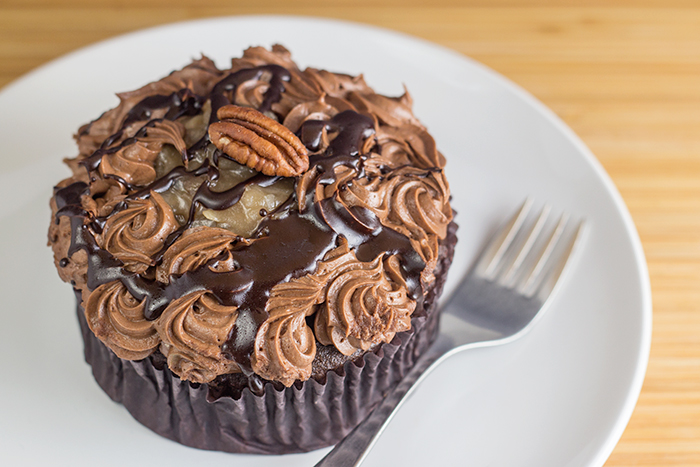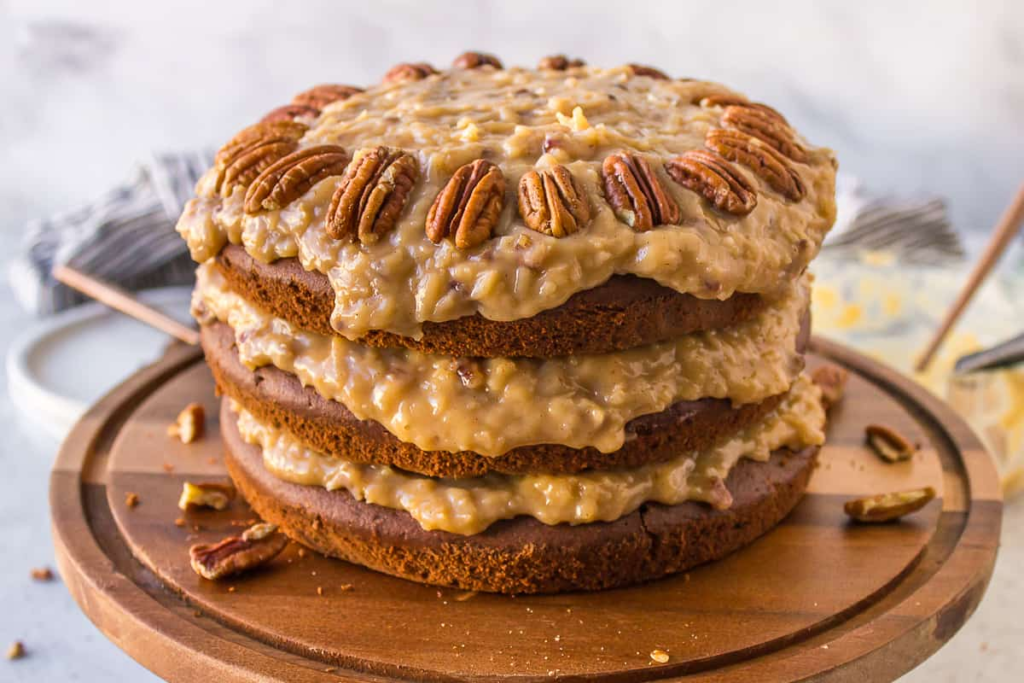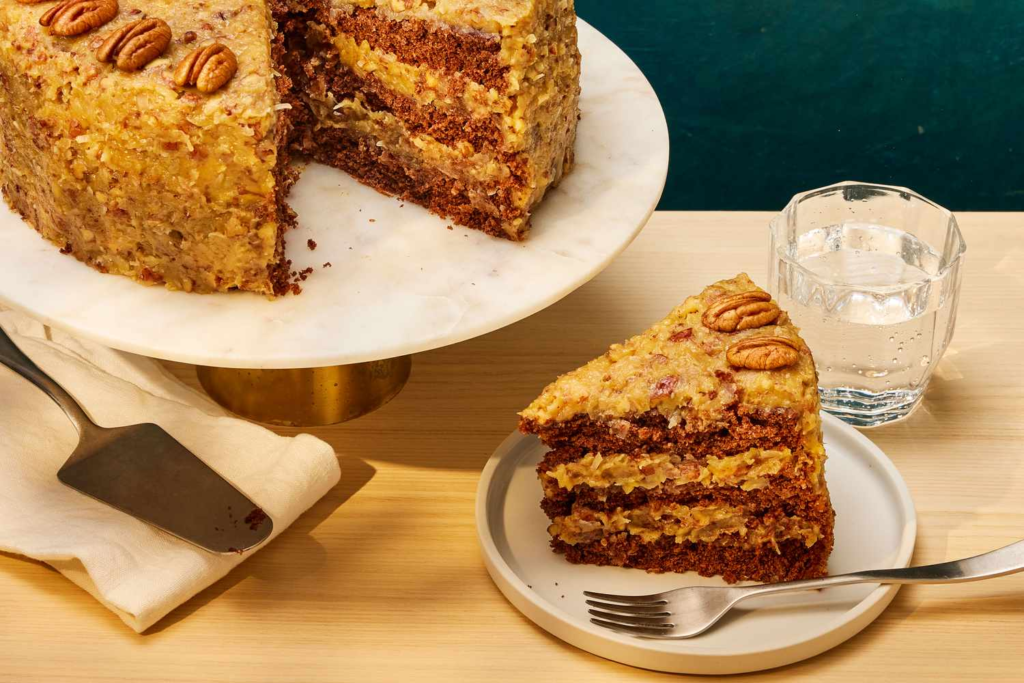When you think of German chocolate cake, you probably imagine a rich dessert from the heart of Europe. But what if we told you this famous cake isn’t German at all? In fact, it’s as American as apple pie—another dish with surprising roots. Many foods we think came from other countries were actually invented right here in the United States. From fortune cookies to French dressing, America has a long history of giving international-sounding names to its homegrown creations. Let’s explore the surprising stories behind these American-born favorites.
German Chocolate Cake: Not German, Just a Man Named German

The delicious layers of chocolate cake, coconut, and pecan frosting are not from Germany but Texas. The recipe dates back to 1957 when a Dallas homemaker used a specific type of baking chocolate—Baker’s German’s Sweet Chocolate—to create the dessert. This chocolate was named after Samuel German, an English-American baker who developed the sweetened baking bar for the Baker’s Chocolate Company in 1852. When a local newspaper published the cake recipe, it was titled “German’s Chocolate Cake,” but over time, the apostrophe was dropped. This led many to believe the cake had German origins. It doesn’t. Today, German chocolate cake is a beloved American treat with a misleading name. Read more about the cake’s history here.
Fortune Cookies: A Japanese Tradition Perfected in America
Many diners enjoy cracking open a fortune cookie after a meal at a Chinese restaurant. But fortune cookies are not Chinese at all. The original concept comes from Japan. A similar cookie, called “tsujiura senbei,” has existed for centuries in Kyoto. Japanese immigrants brought this tradition to the United States, particularly California, in the early 1900s. However, American Chinese restaurants popularized the cookie as a dessert. The fortunes inside were American additions—short messages, lucky numbers, and even lottery picks. In fact, Smithsonian Magazine confirms the fortune cookie is more a product of American food culture than Chinese heritage.
French Dressing: An American Recipe with a European Name
You might assume French dressing is from France, but it’s not. The original recipe was created in the U.S. during the early 20th century. In France, traditional salad dressings are typically vinaigrettes—simple mixtures of oil and vinegar. French dressing, on the other hand, is tangy, sweet, and often contains ketchup, sugar, and paprika. By the 1950s, bottled versions of the dressing became a staple in American kitchens. It earned the name “French” likely to make it sound fancy or exotic. However, there’s nothing authentically French about it. Today, the U.S. Food and Drug Administration (FDA) no longer regulates the ingredients of French dressing, making its American roots even more obvious.
English Muffins: Made in New York, Not London

English muffins are another “foreign” food with American beginnings. Invented in New York City in 1894 by British immigrant Samuel Bath Thomas, these muffins were a twist on traditional crumpets. Thomas introduced them as a new breakfast item—light, airy, and ideal for toasting. He called them “toaster crumpets,” but the name eventually evolved into English muffins to reflect his heritage. Now, they’re a standard part of the American breakfast, especially in dishes like eggs Benedict. Despite the name, you’ll rarely find them in actual English cafes.
Canadian Bacon: A U.S. Take on an International Flavor
Canadian bacon, with its round shape and lean texture, isn’t the typical bacon served in Canada. Canadians usually eat “back bacon” or “peameal bacon,” which is different from what Americans label as Canadian bacon. The name was popularized in the U.S. to distinguish this style from the traditional American “streaky bacon” made from pork belly. Canadian bacon is made from the pork loin, giving it a ham-like texture and taste. It gained popularity as a breakfast food and as a topping for Egg McMuffins and Hawaiian pizza. Ironically, most Canadians wouldn’t recognize it as their own.
Chop Suey: Born in California, Not China

Chop suey sounds like an authentic Chinese dish, but its origins lie in California during the 1800s. Chinese immigrants working on railroads or in mining camps are believed to have invented it using leftover meat and vegetables. Another theory suggests a Chinese-American chef created the dish to appeal to American diners. Regardless of its exact beginning, chop suey became wildly popular across the U.S., especially in Chinese-American restaurants. It represents the blending of two cultures—Chinese cooking styles and American ingredients.
The American Tradition of “Global” Foods
So why do so many American foods have international names? A few reasons: Marketing appeal: Giving a dish an exotic name makes it sound more exciting or fancy. Cultural influence: Many recipes were inspired by immigrants trying to merge their heritage with local tastes. Historical evolution: Over time, dishes evolve, and their names often reflect only part of the story. From Tex-Mex cuisine to New York-style pizza, America has a long tradition of blending global influences into something uniquely its own.
Final Thoughts
These surprising facts about food show how deeply connected American cuisine is to both innovation and global inspiration. Whether it’s a German chocolate cake from Texas or a Chinese fortune cookie invented in California, these dishes are a reminder of how American culture blends flavors, names, and histories from around the world. So the next time you order French dressing or toast an English muffin, remember—you’re enjoying a true piece of American creativity.
Also Read – Boiled Eggs: Health Boost or Cholesterol Bomb? The Truth Inside






